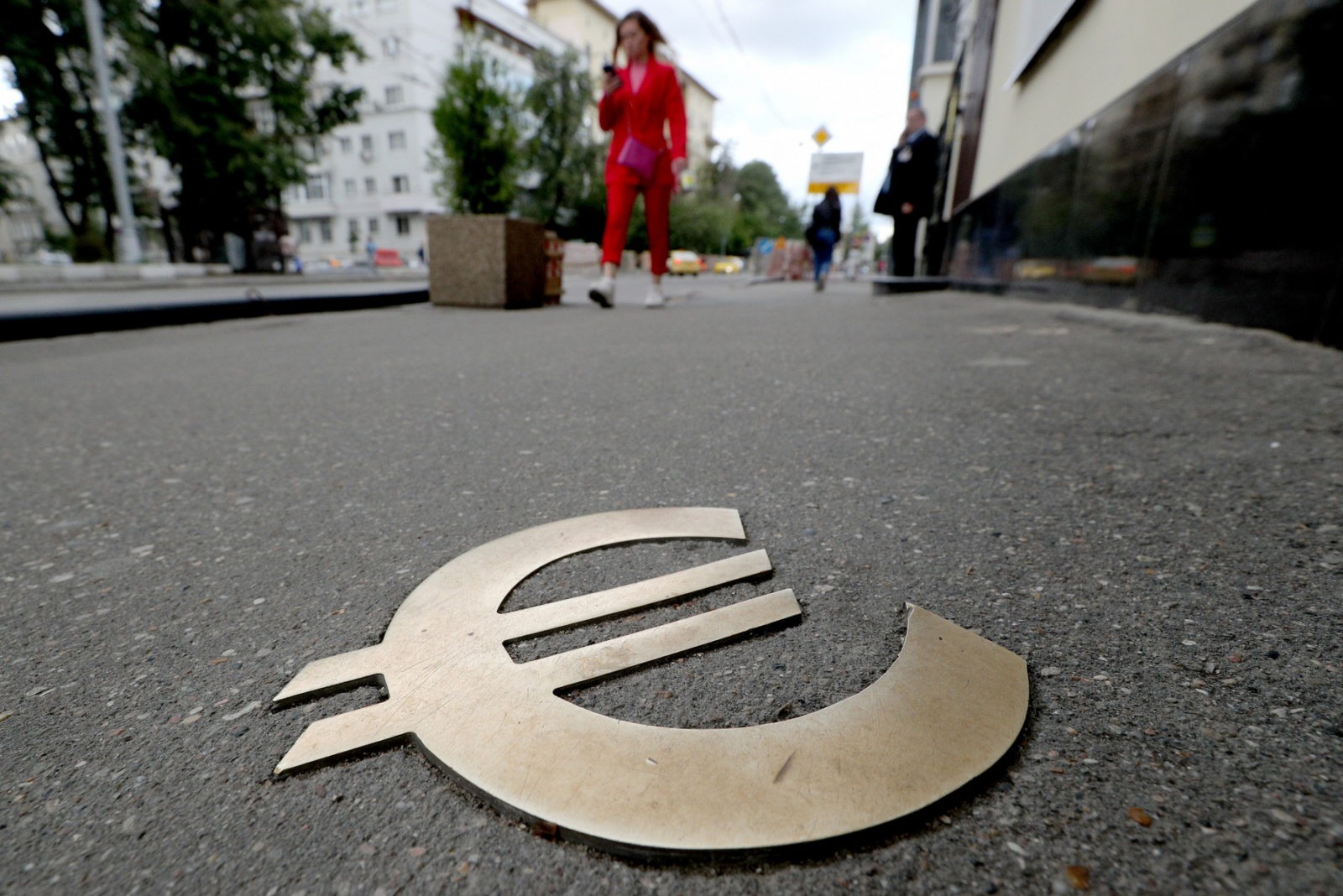The total stock of foreign direct investments (FDI) in the Russian economy amounted to just over $407 billion in 2018. What can we say after taking a closer look at them?
The Central Bank of Russia’s data show at least 68% of the FDI stock refer to investments from offshore jurisdictions. That are places like the Bahamas, Bermuda, Jersey, British Virgin Islands, or jurisdictions that in effect play virtually the same role – such as Cyprus (which accounted for more than 30% of the FDI, or $124.6 billion), the Netherlands, or Luxembourg.
It is obvious that those investments – made through transit financial jurisdictions – have been carried out by someone else. Perhaps they may have been made even by Russians themselves, who have long used such schemes of investment through foreign jurisdictions, under foreign law. For them it is often a way to optimize taxes, as well as to protect Russian investments from extortions and raids by security services.
Moreover, it seems surprising that, according to Bank of Russia, reported FDI from countries, such as the United States or China, are very low – $2.6 billion from China and $3.1 billion from the U.S., amounting to a mere 1.4% of the total.
Investment data distorted
As for most countries in the world, the FDI statistics provided by the Central Bank of Russia is based on the balance of payments. Reported data reflect cross-border investments from the immediate investing country.
Such data do not capture frequent cases when an investment is made, let’s say, by a Dutch SPV entity established by an American corporation. In this example the statistics will show the Netherlands as the investing country, not the United States.
However, given that the lion’s share of such investments (30–50% according to UNCTAD estimates) is actually made through intermediate (transit, or conduit) jurisdictions, investments from such countries as the U.S. or Germany are consistently underreported while investment flows from jurisdictions such as Cyprus or Bermuda are overstated. This offers a distorted picture which is largely useless for analysis, as in Russia’s case.
There is another important yet overlooked aspect. Foreign companies that have long established themselves in Russia tend to reinvest their domestically earned profits without moving them abroad. Such investments are not registered as foreign investments at all. Yet, quite obviously, it’s reasonable to factor them in too. This is what Russian statistical agency Rosstat did until 2014, when the authority to report FDI was handed over to Central Bank who switched to the internationally accepted method.
Silent ‘revolution’ in FDI analysis
Recently, the United Nations Conference on Trade and Development (UNCTAD) published first-ever estimates of foreign direct investments into the economies based on Ultimate Investing Country. By definition, those estimates eliminated intermediary jurisdictions from the FDI matrix.
The data reported by UNCTAD as of the end of 2017 went largely unnoticed by the general public. However, they are able to create a small revolution within the realm of foreign investment analysis. Russia’s case can show clearly how the nominal geography of its inward foreign direct investments centered around offshore/quasi-offshore territories, as reported by Central Bank, is in fact a distorted picture.
‘In fact’ is, of course, a bit arbitrary here since the UNCTAD’s distribution of FDI by the ultimate investing country is an analytical estimation calculated under a probabilistic model based on Markov chains. In other words, UNCTAD didn’t make any direct restatement of investments through the elimination of intermediate investing jurisdictions. Instead, it applied a pure mathematical model (an overview of it obviously goes beyond the scope of this article but readers with particular interest can explore it here).
But the resulting distribution is consistent with the basic intuition suggesting that the vast majority of FDI in Russia reported to come from Cyprus, Bermuda, the British Virgin Islands, etc. has originated in ‘real’ investor countries with ‘classic’ exports of capital or has been ultimately made by Russian investors themselves.
A new perspective
What kind of ‘true’ picture of Russian FDI does UNCTAD model imply?
First, it is the U.S. which turns out to be the largest investor in the Russian economy. As of end-2017 the country accounted for 8.9% of the total accumulated investment, or $39.1 billion. This is 12.6 times more than reported by Russia’s Central Bank. The second largest investor is Germany ($33.2 billion), followed by the United Kingdom ($31.3 billion). According to UNCTAD estimates, these three countries accounted for more than $100 billion of total FDI stock in Russia. This compares to just $40 billion reported by Central Bank.
By contrast, the share of the Netherlands in FDI stock shrinks from about $41 billion to $29 billion. This is plausible given that, for instance, the investments into AvtoVAZ, the biggest Russian car manufacturer, were made by the Dutch-incorporated Russian-French joint venture of Rostec and Renault. A joint venture between Russia’s Yandex.Taxi and US’ Uber has been registered in the Netherlands too.
Curiously, according to UNCTAD data, 6.5% of investments (or $28.9 billion) turned out to be of Russian origin, not foreign. Russian investors traditionally shift money abroad, to countries with favourable tax regimes and unconditional respect for property rights, and repatriate investments from there back home. This is clearly reflected in the Central Bank’s statistics: the stock of foreign direct investments from Russia to Cyprus totals $172 billion, but a significant share of this money has been brought back (FDI stock from Cyprus to Russia is $125 billion as of 1 January 2019).
Currently, only 16 countries report their FDI statistics on the Ultimate Investing Country basis. Among them are the U.S., France, Germany, Japan. Comparing the Bank of Russia’s data on investments made from these countries with the respective data from those countries, one can see that Russian investments as reported by the U.S., Germany and others turn out to be higher. It’s natural since the latter data series include not only investments flowing directly from the U.S., Germany etc., but also investments by these countries’ corporations via third countries.
For instance, according to the U.S. Department of Commerce, cumulative investments of American businesses into Russia amounted to $13.9 billion at the end of 2017 (based on the historical cost of the investments made). This is significantly more than the Central Bank of Russia’s estimate ($3.1 billion). According to the Deutsche Bundesbank, the stock of investments from Germany into Russia totalled EUR 21.3 billion at the end of 2017 ($25.6 billion at the then exchange rate) while the Central Bank of Russia’s estimate is $18.1 billion.
Russia’s economic ties with the West underestimated
Obvious examples of foreign investments with the ultimate investor ‘hidden’ in the statistics include the construction of the plant in the Lipetsk region by US’ Honeywell (the plant was launched in early 2019, and the investment carried out by a Russian entity owned by Honeywell’s Singapore subsidiaries) or the acquisition of the Russian cigarette maker ‘Donskoy Tabak’ by Japan Tobacco made through its Swiss subsidiary, Japan Tobacco International.
Also consider the investments made domestically by Russian subsidiaries of foreign companies, and you will get an even greater share of ‘classic’ investing countries. “Official statistics understates the genuine extent of the economic ties between Russia and the United States,” the joint study by the American Chamber of Commerce in Russia and EY said in May. They estimated the total amount of direct investments made by U.S. companies in Russia over the entire period at $85 billion. This is multiple times greater than the figures provided by Russia’s Central Bank.
The same is true with Chinese investments in Russia. Estimates by the Skolkovo’s Institute for Emerging Markets Research show that the total volume of Chinese investments in Russia reached $36 billion at the end of 2017. China’s investors are no different from others and they too have been extensively using Cypriot or BVI jurisdictions when structuring their investment projects, Oleg Remyga who heads the China section at Skolkovo notes.
New data and a different way to look at sanctions
UNCTAD points out that their method and, generally, the shift to FDI accounting based on the ultimate investing country principle imply “potentially far-reaching policy implications”. It is true, and let us explain why.
When discussing the existing economic sanctions of the West against Russia as well as potential sanctions initiatives, one should consider the ‘true’ scale of economic assets held by Western businesses in Russia. If the U.S. owns Russian investments worth mere $3.1 billion, as implied by Central Bank of Russia’s data, it’s not entirely clear what constrains the US administration from tightening the sanctions. However, if those investments turn out to be at least $33–39 billion (Germany/the U.S.), the balance of potential foreign policy benefits and potential economic costs is tilted towards protecting businesses.
In January 2018, the U.S. Department of Treasury told Congress in a report that potential sanctions against Russia’s sovereign debt carried too much risk for American investors, effectively recommending that these sanctions are not imposed. Russian credit rating agency ACRA estimated at the time U.S. investors held around 10% of Russia’s sovereign debt, or $15 billion. It was certainly not easy for the Treasury to sacrifice even such manageable amount of investments.
US real investments in the Russian economy are apparently much higher, and these are not portfolio investments. They can’t be easily and quickly withdrawn. If the sanctions are tightened dramatically, Russian authorities are capable, in theory, to respond by freezing or even expropriating the property of U.S. companies in Russia – this option was reportedly discussed by the Kremlin in early 2018, on the back of new sanctions at the time. Thus, Western companies have much more at stake in Russia than it might seem at first sight.










